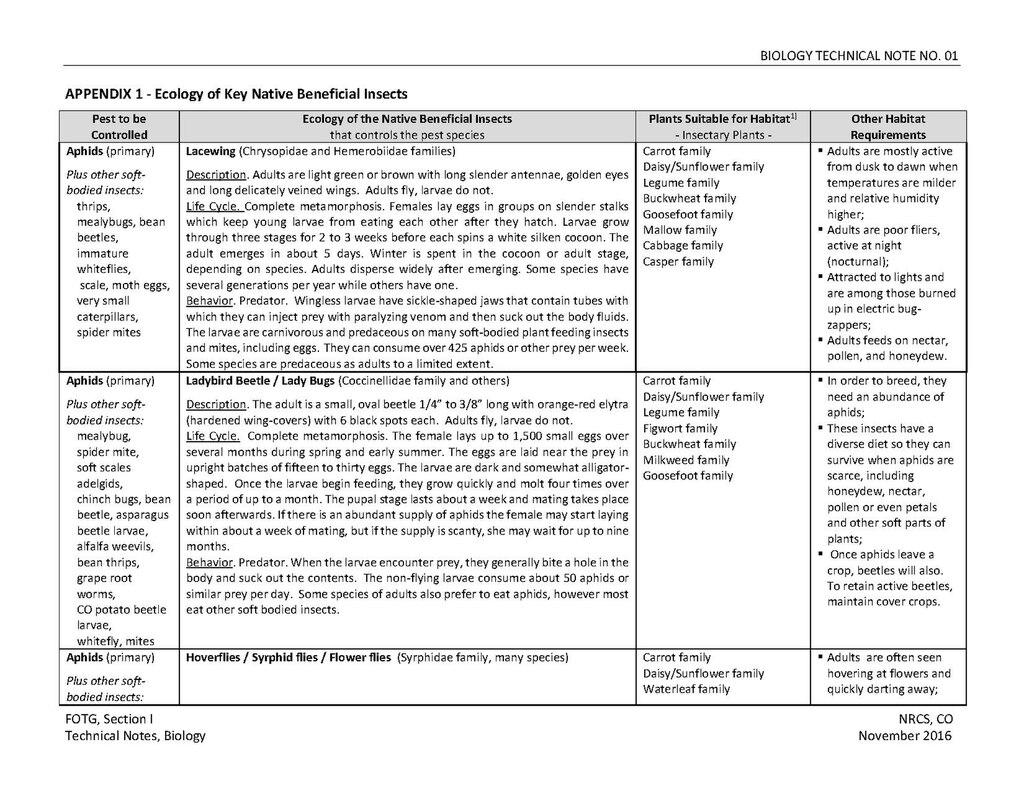| Aphids (primary)
Plus other soft-bodied insects:
- thrips,
- mealybugs,
- bean beetles,
- immature whiteflies,
- scale,
- moth eggs,
- very small caterpillars,
- spider mites
|
Lacewing (Chrysopidae and Hemerobiidae families)
Description. Adults are light green or brown with long slender antennae, golden eyes and long delicately veined wings. Adults fly, larvae do not.
Life Cycle. Complete metamorphosis. Females lay eggs in groups on slender stalks which keep young larvae from eating each other after they hatch. Larvae grow through three stages for 2 to 3 weeks before each spins a white silken cocoon. The adult emerges in about 5 days. Winter is spent in the cocoon or adult stage, depending on species. Adults disperse widely after emerging. Some species have several generations per year while others have one.
Behavior. Predator. Wingless larvae have sickle-shaped jaws that contain tubes with which they can inject prey with paralyzing venom and then suck out the bodily fluids. The larvae are carnivorous and predaceous on many soft-bodied plant feeding insects and mites, including eggs. They can consume over 425 aphids or other prey per week. Some species are predaceous as adults to a limited extent.
|
Carrot family
Daisy/Sunflower family
Legume family
Buckwheat family
Goosefoot family
Mallow family
Cabbage family
Casper family
|
- Adults are mostly active from dusk to dawn when temperatures are milder and relative humidity higher;
- Adults are poor fliers, active at night (nocturnal);
- Attracted to lights and are among those burned up in electric bug-zappers;
- Adults feed on nectar, pollen, and honeydew.
|
| Aphids (primary)
Plus other soft-bodied insects
- mealybug,
- spider mite,
- soft scales adelgids,
- chinch bugs,
- bean beetle,
- asparagus beetle larvae,
- alfalfa weevils,
- bean thrips,
- grape root worms,
- CO potato beetle larvae,
- whitefly,
- mites
|
Ladybird Beetle / Lady Bugs (Coccinellidae family and others)
Despription. The adult is a small, oval beetle 1/4" to 3/8" long with orange-red elytra (hardened wing-covers) with 6 black spots each. Adults fly, larvae do not.
Life Cycle. Complete metamorphosis. The female lays up to 1,500 small eggs over several months during spring and early summer. The eggs are laid near the prey in upright batches of fifteen to thirty eggs. The larvae are dark and somewhat alligator-shaped. Once the larvae begin feeding, they grow quickly and molt four times over a period of up to a month. The pupal stage lasts about a week and mating takes place soon afterwards. If there is an abundant supply of aphids the female may start laying within about a week of mating, but if the supply is scanty, she may wait for up to nine months.
Behavior Predator. When the larvae encounter prey, they generally bite a hole in the body and suck out the contents. The non-flying larvae consume about 50 aphids or similar prey per day. Some species of adults also prefer to east aphids, however most eat other soft bodied insects.
|
Carrot family
Daisy/Sunflower family
Legume family
Figwort family
Buckwheat family
Milkweed family
Goosefoot family
|
- In order to breed, they need an abundance of aphids;
- These insects have a diverse diet so they can survive when aphids are scarce, including honeydew, nectar, pollen, or even petals and other soft parts of plants;
- Once aphids leave a crop, beetles will also. To retain active beetles, maintain cover crops.
|
| Aphids (primary)
Plus other soft-bodied insects:
|
Hoverflies / Syrphid Flies / Flower flies (Syrphidae family, many species)
|
Carrot family
Daisy/Sunflower family
Waterleaf Family
|
- Adults are often seen hovering at flowers and quickly darting away;
|
